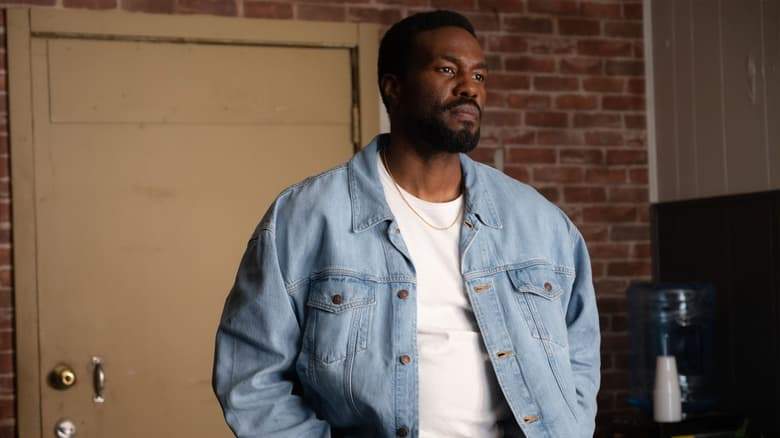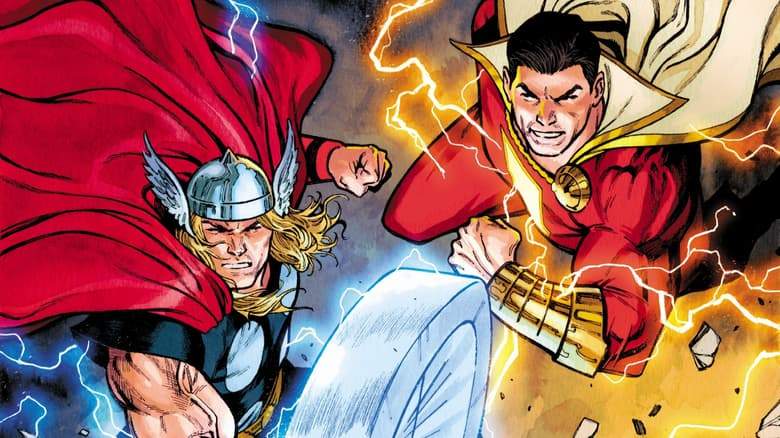By the Numbers: The Powers of the Spider-Verse
Get an infographic look at the stats behind every spider-hero in the Marvel Multiverse!
So many spider-people, so little time!
The mighty Marvel Multiverse is not a great place for arachnophobes, as it’s full of web-slinging and wall-crawling individuals (and some of them are not so neighborhood-friendly). Fortunately, though, most of them are heroic and have humanity’s best interests in mind—or at least when they’re not fighting the Inheritors for their own right to exist.
With the massive SPIDER-GEDDON event in full swing, we decided to break down some of the most important statistics and characteristics surrounding these web-headed characters. What does it take to be a spider-hero? What traits do spider-heroes most often have?
Some answers are obvious, while others could only be gleaned by hours of rigorous research and determined deduction. But enough about us. It’s time to dive into the Spider-Verse!
Here's what spider-heroes have most in common...
AN INFLUX OF SPIDER-PEOPLE
Did you know that more spider-heroes have been invented over the last 10+ years than in any time since Spider-Man’s debut in 1962? In particular, 2015 takes the cake for most spider-people created in a single year, thanks to the AMAZING SPIDER-MAN: RENEW YOUR VOWS storyline by Dan Scott and Adam Kubert.
It delivered MJ’s spider-mom, Spiderling (the daughter of Peter and MJ), and Spider-Man from Earth-18119 into the mix. That same year, we also got Spider-Punk (Hobart Brown), Steampunk Lady Spider (May Reilly), Spider-Ben, and the Spider-Woman version of May Parker, who was previously known as Spider-Girl.
After that, the years 2014 and 2016 are both tied for second.
2014 had the introduction of Spider-Gwen (Gwen Stacy), Silk (Cindy Moon), Spider-Man UK (William Braddock), and SP//dr (Peni Parker). While 2016 had the the introduction of Octavia Otto, Spider-Cowboy, and Tsum Tsum Spidey!
Aside from the ones we already mentioned, the last 12 years have yielded a spike in spider-people, some of whom—like Spider-Gwen and Miles Morales—are already modern classics.
EIGHT-LEGGED BACKSTORIES & POWERS
This one has been staring us in the face all along. To be a spider-hero, a spider must be involved their backstories and abilities in some way. Peter Parker was bitten by a radioactive spider, Spider-Ham was a spider, and Peni Parker has a psychic connection to the arachnid inside her father’s mech-suit. The list goes on and on, folks.
Naturally, those spider-related origins also result in spider-related powers (like wall-crawling, Spidey-Sense, web production, and web-slinging). However, it doesn’t have to be wall-crawling or web-slinging necessarily, so long as multiple legs are involved. For example, Octavia Otto—a heroic and female version of Doctor Octopus—is an invaluable part of the renewed fight against the Inheritors in the current SPIDER-GEDDON arc!
Yes, we realize she’s not technically a spider-person, which brings us to our next statistic…
A CONNECTION TO PETER PARKER
If you’re a secondary character that has some sort of connection (important or passing) to Mr. Peter Parker—or if you're just...named Peter Parker—odds are good that you’re probably a spider-hero, either in the main Marvel Universe or an alternate version of it.
That is how Octavia Otto can be classified as an honorary spider-person, since she is an alternate version of one of Peter’s most intimate adversaries, Doctor Octopus. But, of course, it’s not just her—there are more concrete examples of periphery Spider-Man characters that have become arachnoid heroes in other realities that we shall enumerate below…
Spider-Gwen (Gwen Stacy) and Spider-Man (Miles Morales) may be the most famous ones of them all, but you’ve also got Cindy Moon (Silk—bitten by the same spider as Peter), Spinneret (Mary Jane Watson), Superior Spider-Man (Dock Ock’s brain in Parker’s body), Captain Spider (an alternate version of Parker’s high school bully Flash Thompson), Spiderling (daughter of Peter and MJ), and Scarlet Spider (a Jackal-created clone of Peter Parker).
While not every spider-person has a connection to Parker, he still is the original Spider-Man, making him an important part in a lot of their lives, origins, etc. However, that means those closest to him can also become spider-heroes like some strange twist of fate. In one instance, Aunt May even became Spider Ma’am after receiving a radioactive bite!
There was also a version of Uncle Ben that was bitten by the radioactive spider, but gave up crimefighting after his arch nemesis, the Emerald Elf (his universe’s version of the Green Goblin), killed Ben’s wife and nephew in a tragic explosion.

And speaking of the Green Goblin…
SOME SORT OF GOBLIN-ESQUE ADVERSARY
We talk about a common enemy later on in this list, but that’s more geared toward a universal enemy that plagues all spider-people no matter where they reside in the Marvel Multiverse. For this stat, we want to talk about the fact that many (if not all) spider-heroes have some sort of Green Goblin-like character in their reality.
Nearly as old as Spider-Man himself (at least in comic book years), the Goblin and people like him have plagued our friendly neighborhood web-slinger for over five decades. He’s so ingrained in the character’s radioactive DNA that he pops up in all kinds of alternate realities!
In Spider-Ham’s universe, he is a turkey known as the “Green Gobbler.” In Spider-Man Noir’s world, he’s known simply as “the Goblin,” and, as we mentioned above, he’s called the “Emerald Elf” in the dimension where Uncle Ben became Spider-Man.
RELUCTANT, MISTRUSTING, AND SURPRISED
Spider-people usually operate alone. It’s not like they’re opposed to working with others or anything, but like Peter Parker, a spider-person is often an isolated incident. That means they’re bitten by a spider (or something similar), gain their powers, and then take it upon themselves to use said powers for good.
They don’t work with others because there isn’t anyone else like them around (yes, there are exceptions to the rule). Obviously, a spider-hero will play a role in a larger team, but you never really see them with a trusty sidekick. In addition, they are often mistrusting or surprised, especially when another spider-person decides to waltz in out of the blue from a parallel universe.
In issue #0 of SPIDER-GEDDON, the Spider-Man of Earth-1048 is approached by the Superior Spider-Man (Dock Ock), who seeks his help in the coming fight against the Inheritors. At first, Spidey-1048 doesn’t believe the newly-arrived Spider-Person from Earth-616 and even tries to subdue him along with the Tarantula.
A COMMON ENEMY
If the SPIDER-VERSE and SPIDER-GEDDON storylines have taught us anything thus far, it’s that the Inheritors have a particular taste for the life forces of spider-people. No spider-hero, not even the guardian of the Web of Life and Destiny, are safe from the voracious and insatiable appetites of the vampire-esque hunters that traverse the multiverse. The Inheritors are the driving force that brings all of the spider-people together, serving as the reasoning behind the aforementioned SPIDER-VERSE and SPIDER-GEDDON story arcs.
ONE DEFINING TRAIT
Each spider-people usually has one (and only one) characteristic that makes them unique. As the original spider-hero, the Peter Parker of our universe is a plain ol’ web-slinger. This blandness by the definition of this category is a defining characteristic in and of itself. Other examples include Spider-Ham (a talking pig), Spider-Man Noir (a hardboiled detective), Spider-Man UK (a British hero), Spider-Punk (a rock star’s attire), Superior Spider-Man (robotic legs), etc.
A LOVE OR HATRED FOR CRACKING JOKES
When it comes to spider-people, there is no middle ground on jokes. Either you love belting out cheeky one-liners or you’re as cold and unremitting as a stone. The Superior Spider-Man makes mention of this fact in Part 3 of SPIDER-VERSE, noting that joking is the sign of immaturity and weakness.
“Jokes? Really? I outgrew those, got smart, wised up,” says the Peter Parker that is really Otto Octavius’s brain with Peter Parker’s body.
It makes sense, trust us.
A CLEAR SENSE OF DUTY
A spider-person never shies away from a battle, always ready to do what it takes to save the world, or the Marvel Multiverse. Given the choice between action and complacency, a spider-hero will always choose to act. That’s why you always see them arriving in such big droves when the Multiverse is in crisis. No one wants to be left out of the party, so-to-speak.
A SOFT-SPOT FOR MORALITY
The vast majority of Spider-People do not murder others if they can avoid it, which is not always such a good thing...
This is what led to the mess in SPIDER-GEDDON in the first place. By agreeing not to kill the Inheritors in SPIDER-VERSE (they simply trapped them on a radioactive planet), they left the door open for their greatest enemies to return, and that’s exactly what happened.
Visit your local comic shop to read SPIDER-GEDDON now!
The Daily Bugle
Can’t-miss news and updates from across the Marvel Universe!




